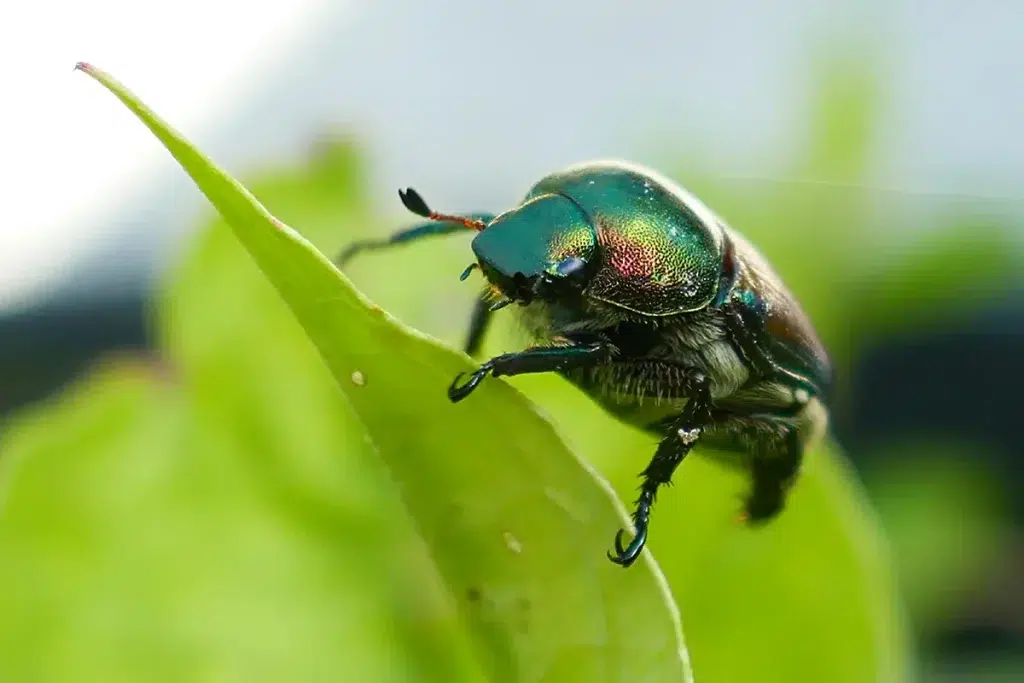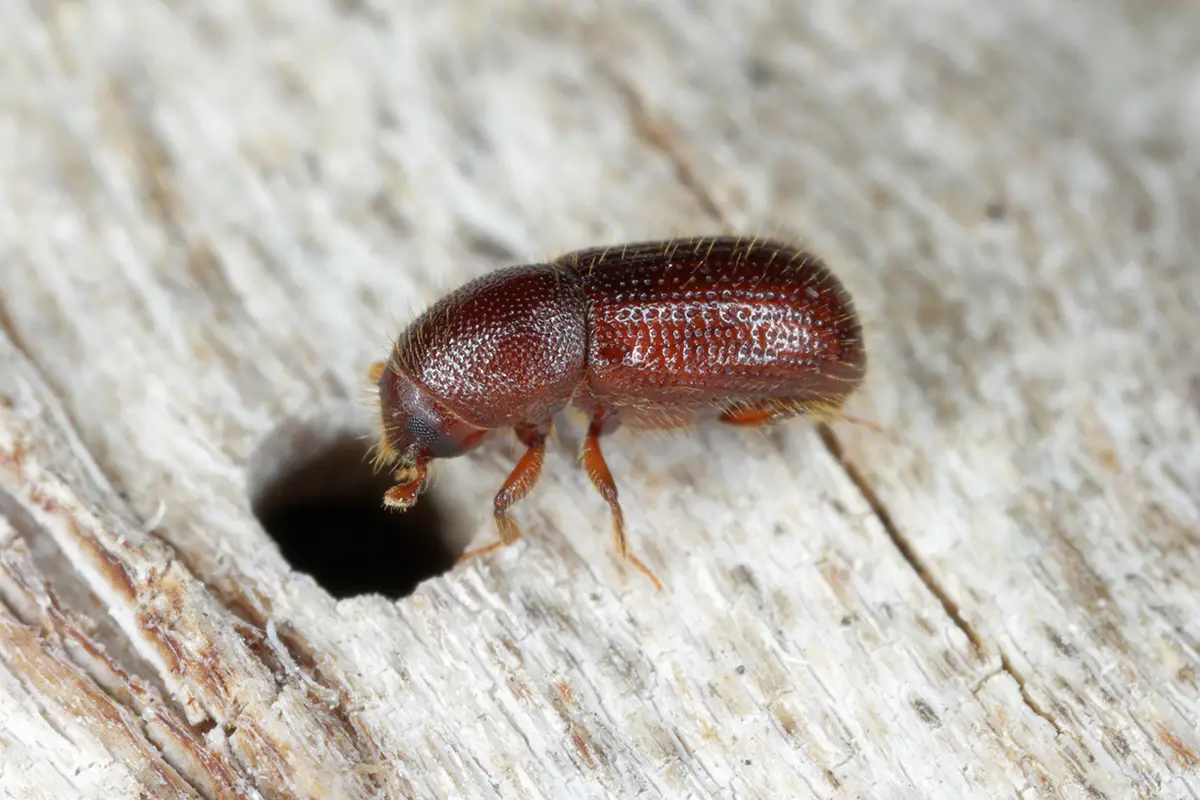Insect damage can weaken even the healthiest trees—often without visible symptoms until infestations are well underway. Left untreated, pests can spread rapidly, leading to branch dieback, canopy thinning, or even total tree failure.
At Horhut Tree Experts, our ISA Certified Arborists are trained to detect insect injury early and implement targeted, environmentally responsible treatments—before the damage becomes irreversible.
👉 Call 412-855-2703 today to schedule an insect damage inspection and protect your trees before pests spread.
Introduction to Tree Health
Healthy trees are the foundation of a thriving landscape. But maintaining tree health requires more than watering and fertilizing—it means understanding how trees respond to injuries and insect pressures.
- Mechanical wounds (from lawn equipment, vehicles, or poor pruning) create entry points for insects and diseases.
- Trees defend themselves by producing wound wood, a protective tissue that seals injuries.
- Proper pruning techniques are essential to support wound closure and reduce pest invasion.
By prioritizing correct wound management, you not only prevent insect spread but also promote long-term tree resilience.
Why Early Detection Is Critical
Most insect damage begins subtly—a few discolored leaves, sticky residue, or premature leaf drop. But pests may already be:
- Feeding on vascular tissue
- Boring into bark
- Laying eggs that hatch in spring
Benefits of Early Detection
- Targeted, low-impact treatments
- Preserved tree structure and health
- Reduced chemical use with timing-based control
- Protection of surrounding trees and shrubs
👉 The earlier pests are detected, the more effective—and affordable—the treatment.
Common Signs of Tree Insect Injury
Be on the lookout for these warning signs:
- Leaf Damage – Chewing, skeletonizing, or browning edges (gypsy moths, caterpillars)
- Sap or Resin Flow – May signal boring insects or beetle activity
- Sticky Honeydew or Black Sooty Mold – Often caused by aphids or scale insects
- Frass (sawdust-like material) – A telltale sign of borer activity
- Dieback or Wilting Branch Tips – Could point to vascular-feeding pests
- Tiny Holes in Bark – Entry or exit points for beetles and borers
- Increased Woodpecker Activity – Often a sign of hidden insect infestations
👉 Exposed wounds and tissue attract pests quickly—prompt treatment is essential.
Tree Insects That Commonly Damage Pittsburgh Trees
The Greater Pittsburgh region faces threats from both native and invasive pests, including:
- Emerald Ash Borer – Destroys ash trees by feeding on inner bark
- Asian Longhorned Beetle – Tunnels into hardwoods like maple and birch
- Scale Insects – Attach to branches and stems, feeding on sap
- Japanese Beetles – Feed on leaves and flowers, requiring targeted control
- Aphids & Mites – Distort foliage and spread plant diseases
- Caterpillars & Sawflies – Can defoliate trees during outbreaks
- Bronze Birch Borer – Targets stressed birch, causing top-down dieback
Many of these are invasive species with no natural predators, making professional monitoring essential.

Tree Damage and Healing
When a tree is wounded—by storm damage, improper pruning, or pests—it initiates a natural defense process:
- Wound wood (callus tissue) develops around the edges to seal the injury.
- Complete wound closure reduces infection risk and strengthens the tree.
Wound paints or dressings often do more harm than good by slowing closure.
Best Practices for Tree Healing
- Make clean, proper pruning cuts to encourage closure.
- Avoid unnecessary wound dressings.
- Support tree recovery with healthy soil, water, and nutrients.
👉 Healthy trees heal faster and resist insect infestations more effectively.
Our Science-Based Approach to Tree Insect Management
At Horhut Tree Experts, we use a strategic Integrated Pest Management (IPM) model, not broad-spectrum spraying. This aligns with ANSI A300 standards for plant health care.
Our Process
- Tree & Site Evaluation – Inspect overall tree health and pest pressure
- Accurate Pest Identification – Correct diagnosis ensures proper treatment
- Timing-Based Treatments – Target pests at their most vulnerable stages
- Targeted Applications – Trunk injections, systemics, or oils as needed
- Follow-Up Monitoring – Ensures effectiveness and prevents reinfestation
All treatments are performed by ISA Certified Arborists who follow ANSI Z133 safety standards.
When Insect Damage Goes Untreated…
Severe or untreated infestations can cause:
- Permanent structural weakening of the tree
- Increased fungal and bacterial infections (e.g., oak wilt risk in wounded oaks)
- Hazardous deadwood and falling branches
- Premature decline or tree loss
- Accelerated decay as pests invade living tissues
👉 Preventive and early-stage treatments are far more cost-effective than emergency removals.
Schedule an Insect Damage Inspection Today
If you notice signs of insect damage—or want to prevent problems before next season—our team is ready to help.
We’ll:
- Identify current threats
- Recommend science-based treatment options
- Protect your trees and property investment
📞 Call Horhut Tree Experts at 412-855-2703 or request an inspection online today.
Let our ISA Certified team safeguard your trees with expert, environmentally responsible care.

